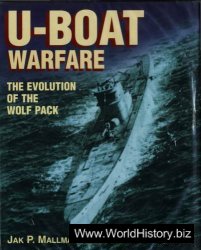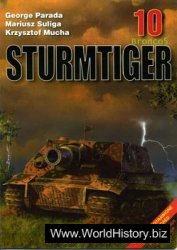OF Italy After the Allies captured the
Remaining Axis troops in North Africa in May 1943, they turned their attention to the European continent. The British argued for an invasion of Sicily and Italy, into what Churchill called the "soft underbelly" of Europe. Surprising Hitler and Mussolini, the Allies struck at Sicily, coming ashore in early July 1943.
Sicily. The tired Italian defenders didn’t offer much resistance—some even helped unload the Allies’ landing craft. But the German divisions fought hard, keeping open an escape route to Italy across the Straits of Messina. From there most of the German troops managed to retreat from Sicily between August 12-17. The Italian Army had lost its will to fight. On July 25 the Italian government had already arrested Mussolini, and by early September the countiy announced it was joining the Allied cause.
This infuriated Hitler. He rescued Mussolini and poured fresh troops into Italy, demanding that Field Marshal Albert Kesselring hold the peninsula. Hitler had acted Just in time. On September 9, the United States and Briti. sh troops stormed ashore at Salerno, just south of Naples. The landings went easily at first, but the Germans counterattacked, nearly splitting the beachhead in two in a series of bloody assaults. Only massive air strikes and naval artillery were able to stop the German attacks. By early October, the British Eighth and American Fifth armies had conquered all of Italy south of the city of Naples.
The Meat Grinder. Italy was anything but a "soft underbelly” to the Allied troops that fought there. Mountains almost 10,000 feet high ran up and down the peninsula’s spine, and rocky spurs stretched toward the Adriatic and Mediterranean coasts. Swift rivers ran from the heights down to the seas, forming a series of obstacles to the invading Allies. Nature wasn’t the only enemy. North-south highways ran on the narrow coastal plains, where German guns on the ridges and hilltops could bring tanks and trucks under heavy fire. Hitler’s troops held a strong position—the Gustav Line—stretching 120 miles across Italy. The only way to advance was into the jaws of German defenses.
The opposing lines were locked in a miserable battle all through the winter of 1943-44. Winter floods made the rivers impassable. Expert Gernian soldiers pinned down the American, British, Polish, Moroccan, Canadian, and New Zealand divisions struggling northward. Trying to cross the Rapido River in late January 1944, a Texas division ran into a wall of gunfire. The Germans killed 1,000 of the 6,000 Texan infantrymen who tried to cross.
Even when successful. Allied attacks could make only a few miles before being stopped by mud, cold, and a fresh Gennan defensive line. The fighting in Italy was hon-ibly familiar to those officers who’d seen the brutal, muddy trench warfare of World War I.
George S. Patton, even in 1940, was nobody’s idea of ’’politically correct," Commanding troops in the brutal and protracted fight in North Africa and Sicily, Patton was twice reprimanded for verbally abusing and even slapping soldiers suffering from combat exhaustion. “Old Blood and Guts,” as he was often called, got into even more trouble when he delivered a charged speech before U. S. troop landings at Messina. The speech, which emphasized the importance of killing German soldiers, was blamed for the massacre of German and Italian prisoners by U. S. troops at Biscari in July and August 1943. Patton’s toughness and aggression came close to ending his career.
But General Eisenhower, then Supreme Commander in the Mediterranean, would not let go of Patton. The general with the highly polished boots and pearl-handled pistols was simply too valuable, and Eisenhower knew it— even though Patton's real brilliance had not yet shown. Instead Patton was sent to Britain to take charge of the U. S. Third Army.
As Allied troops were breaking out of Normandy in August, Patton’s forces, moving out from Brest (see map on pages 106-107) put a division across the Seine southeast of Paris. His soldiers might have been the first liberation troops to enter the French capital, but that privilege was given to the French-led forces of Charles de Gaulle.
By November, Patton’s forces had reached the west wall of the German border. Then disaster struck the Allies further north. The Germans launched the Ardennes offensive. U. S. troops were soon encircled at Bastogne, holding off, it seemed, the entire German Army.
Patton was sent to their rescue. He pushed his exhausted troops northward at incredible speed, chomping at the southern edge of the German line, and relieving the siege at Bastogne. The Third Army’s push north has been called one of the most remarkable movements in military history. It wrapped and ribboned Patton’s military reputation, showing his aggression in all Its lifesaving glory.

U. S. troops are welcomed by Italian children. The fight for Italy would continue until the end of the war in Europe.
The Trap at Anzio. The Allies tried to break the stalemate with a seaborne landing at Anzio, behind the German lines. Coming ashore with complete suiprise on January 22, the Americans soon had a beachhead just thirty miles south of Rome.
But Kesselring recovered quickly, brought up fresh troops, and kept the Americans penned in. Hitler decided to show the Allies what would happen if they tried to invade France and ordered the Wehmiacht to crush the beachhead. Anzio became a bloody trap for the Americans. Pinned down under the deadly German guns, U. S. troops would not break out until May 1944.
Monte CaSSINO. in February 1944, the Allies tried to smash past the German Gustav Line on the west coast. Genera] Mark Clarks Fifth AiTny couldn’t move under the artillery fire directed from the 1,400-year-old Benedictine monastery at Cassino. The Gennans didn’t use the monastery itself, but the rocky hilltops and ridges were just as strong as the ancient fortress on Monte Cassino.
Unable to advance and convinced the abbey was being used as a spotting post by the Germans, the Allies, in frustration, decided to destroy the monastery. On Febioiaiy 16, 135 B-I7s bombed the ancient walls into ruins. The elite German defenders—a parachute division—immediately burrowed into the rubble, making the position even more formidable. By mid-March, the third in a series of bloody Allied assaults ended in failure. Cassino’s hillsides were a moon-cratered wasteland. Onlv' in May would Polish Allied troops seize the hilltop in a final, sav'age assault.
Rome Falls. Bogged dowTi in the bitter winter fighting,
The Allies searched for some crack in the German armor. They used air attacks on railways and bridges to deny supplies to the German troops. Fresh Allied soldiere, expert in mountain warfare, replaced those sent back to England for the invasion of France.
In May, catching the defenders off guard, the Allies finally broke out from around Cassino. At last Allied tanks rolled tow'ard Rome. Had thev' turned eastward and cut off the Germans’ retreat, the Italian campaign might have ended much earlier.
Instead U. S. General Mark Clark, intent on being the liberator of Rome, pressed toward the Eternal Citv; which was liberated on June 5, 1944. Kesselring’s Geiman Army slipped away.
Not until the spring of 1945, after months of bitter fighting, would the Allies break out into the plains of northern Italy. In fact, when the war ended in IVlay 1945, the Germans still held on in the Alps.
The campaign in Italy, instead of opening up Germany’s back door, diverted Allied troops from a faster buildup to the invasion of Fi'ance. Italv's liberation cost the Allies a staggering price—paid in lost opportunity and in lives.




 World History
World History









